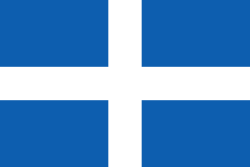One of the pious views of modern Greece concerns the role of the Orthodox Church in the establishment of the modern Greek nation-state. According to this view, the Church, in the role of a latter-day Noah's Ark, saved the Greek nation in the centuries of the Turkish and Western "deluge" following the fall of the eastern Roman empire in 1453. The Orthodox Church, by protecting the true faith against both Muslim and Latin temporal princes in the centuries of foreign rule, preserved Greek identity and kept the Greek nation from being assimilated by the nations of its foreign rulers. According to the same view, the Orthodox Church welcomed the Greek War of Independence in 1821 and blessed the arms of the Greek insurgents. Indeed, many Orthodox prelates assumed a leading role in insurgent Greece and played an important part not only in ecclesiastical but also in political and military matters. Following Independence, a Latin prince and his Western advisers severed the links that had united the Church of Greece with the Ecumenical Patriarchate and placed the Church under the authority of his temporal power. [1]



















